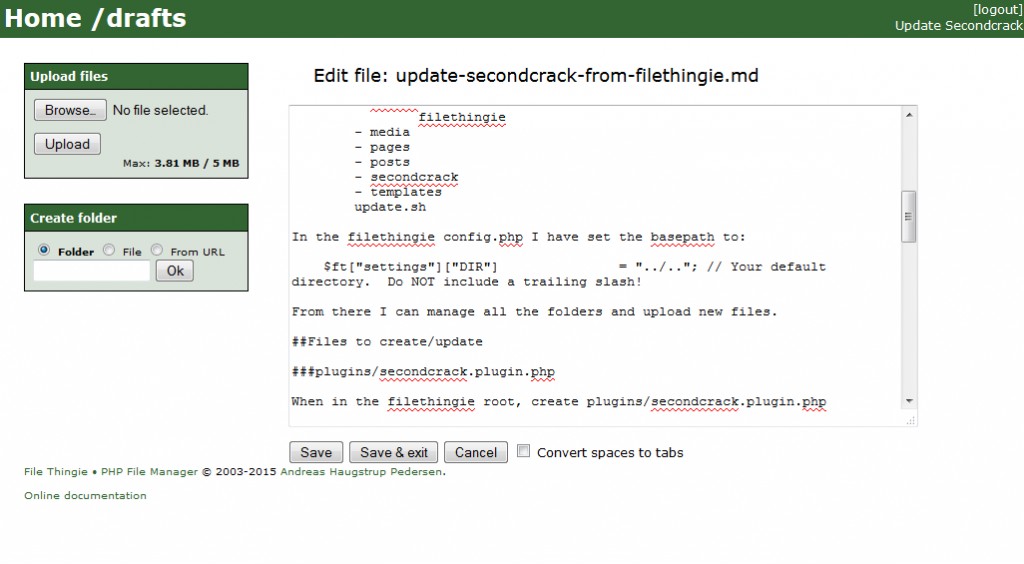This blog post describes how to set up a filethingie installation and create a plugin to update your posts. It assumes that you already have a shell script in place to start the update of your blog.
Disclaimer: you are yourself responsible for securing the access to filethingie and the command to update secondcrack.
For the first step simply point the filethingie basepath to the second crack basepath. I use:
/srv/http/webapps/siteroot
- cache
- drafts
- htdocs
filethingie
- media
- pages
- posts
- secondcrack
- templates
update.sh
In the filethingie config.php I have set the basepath to:
$ft["settings"]["DIR"] = "../.."; // Your default directory. Do NOT include a trailing slash!
From there I can manage all the folders and upload new files.
Files to create/update to update Second Crack

plugins/secondcrack.plugin.php
When in the filethingie root, create plugins/secondcrack.plugin.php
<?php
function ft_secondcrack_info() {
return array(
'name' => 'Secondcrack pugin',
'settings' => array(
'updatecommand' => array('description' => 'The command to update the blog', 'default' => '')
)
);
}
function ft_secondcrack_page($act) {
global $ft;
if ($act === 'secondcrack') {
set_time_limit(0);
$command = $ft['plugins']['secondcrack']['settings']['updatecommand'];
$result = shell_exec($command);
return 'Command run! Output: <i>' . htmlentities($result) . '</i>';
}
}
function ft_secondcrack_secondary_menu() {
return '<a href="' . ft_get_self() . '?act=secondcrack">Update Secondcrack</a>';
}
config.php
$ft['plugins']['secondcrack'] = array(
'settings' => array('updatecommand' => '[the updatecomand]')
);
Replace [the updatecommand] with the command you use to update secondcrack. I have created a small update.sh shell script that I placed in the root of the folder.
update.sh
#!/bin/sh
cd /srv/http/webapps/siteroot
/usr/bin/php ./secondcrack/engine/update.php >> /var/log/secondcrack.log 2>&1
echo "CLI: Executed update command for secondcrack."This script assumes that there is a folder called secondcrack in the siteroot where the engine can be invoked.
